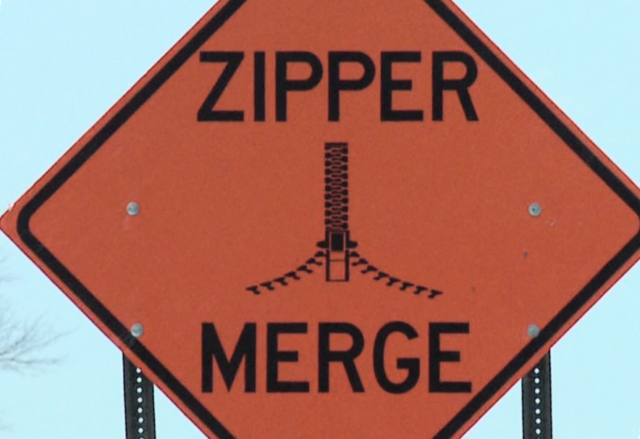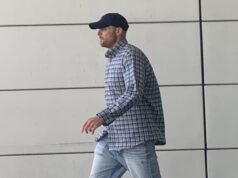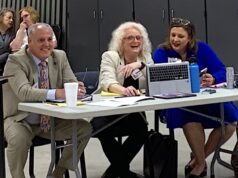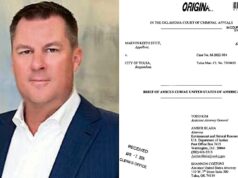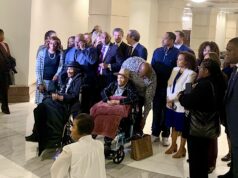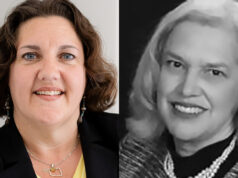Because I know an article about zippers written by a geezer like me could be scary for some, let me assure you this has nothing to do with clothing malfunctions.
As a Tulsa mid-towner for the past 45 years, my usual city driving is all about four- or six-lane arterials and expressways. Then, two summers ago, while acting as an Uber driver for my grandchildren, I began negotiating south Tulsa’s many two-lane streets that feed into six-lane intersections and back again to a two-lane street.
Having served as an elected City of Tulsa Commissioner and City Councilor for 14 years, and having listened to many presentations by city engineers about street-construction projects, this seeming incongruity did not surprise me. The city simply lacked the financial resources to expand city services at the same pace as commercial and residential development. Other than required right-of-way donations, there was no favored mechanism in place to secure funding for the expansion of streets and intersections. Water, sewer, storm-water and refuse disposal were better positioned, so most public concern seemed to be about the traffic congestion resulting from Tulsa’s southward growth.
Most of those years, I represented downtown and midtown areas. I mostly just listened to south Tulsa woes while privately thinking, “Well, it was your choice to move there,” and that we “established” neighborhoods would also have to pay for the costly street-widening that was demanded. I remember clearly in those meetings hearing city engineers emphasize that intersection improvements were the logical priority, which made perfect sense to me, since intersections are more likely to be a bottleneck than the streets leading to and from them. I gave little thought, however, to how one moves from a two-lane street through a six-lane intersection and then back to a two-lane street, because where I mostly drove were four- and six-lane streets.
Zipper is quicker
My primary driving experience with losing a lane, until recently, involved highway and expressway driving, often related to construction closures. I confess that I always opted for the “polite” approach (and still do), choosing to merge out of the lane to be closed sooner than later. In addition to being rude when traffic is slowing down, it also seemed potentially reckless to continue on at a high speed not knowing whether a safe opportunity to merge would occur at a future point of road closure that was not always clear.
Then, I read about zipper merging. The main focus – as is much of what pops up in a Google search – is on improving traffic flow when a highway/expressway lane is closed due to construction. Engineers argue that flow can be improved as much as 40 percent if drivers continue in both lanes, at reasonable speed, to the point of closure and then merge every other car in a zipper-like move. (I still struggle with that, especially when the line has already formed.)
But it did come to mind two years ago when I began driving daily on far-south Tulsa streets. After weeks of following my polite instincts and sitting through sluggish signal cycles, I consulted my engineer daughter, whose children I was transporting, and we agreed that using both lanes to clear the intersection, followed by zipper merging, was the right and efficient action to take. Hence she and I – and a few others – regularly drive “rudely” but in a way that moves traffic more efficiently and helps everyone.
Letter in Tulsa World prompts response
The following letter to the editor appeared in the Tulsa World on May 31:
Anyone who regularly drives on area streets plays the two-lane squeeze all too often. Intersections widening from two to four lanes only provide passing lanes for those who never learned to wait their turn or want to show how their fast car can dart in front of you. It’s only slightly better going from six to four lanes.
These situations are road rage incubators. Then again, to paraphrase one local councilor, “We knew the poor shape our roads were in when we moved here.”
It is apparent that it is more important to develop our cities in ways to attract and please strangers and visitors than to make the quality of our neighborhoods better through carefully planned road construction and traffic control.
These are thoughts developed while sitting through lengthy signal cycles at numerous locations in Tulsa and Broken Arrow. I can and do avoid those streets and intersections whenever possible as well as the businesses on those streets and intersections.
It seems the avenue for growing a strong economy and investing residents with pride and confidence in their city and neighborhood is to develop better streets.
I have since responded to the letter above with a letter of my own. In it, I outline the situations described in this post and the way in which zipper merging helps relieve traffic congestion. My conclusion: By being “rude” I help move traffic; “polite” drivers are preventing cars behind them from clearing the intersection. I’ve also reached out to the City of Tulsa engineers to see if there is an official position on zippering after moving through an intersection.
Meanwhile, I’m getting a bumper sticker that says “Zipper Is Quicker”.









